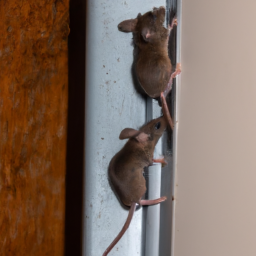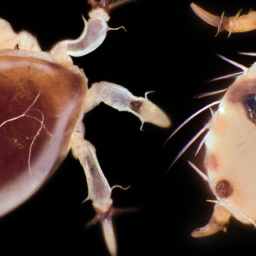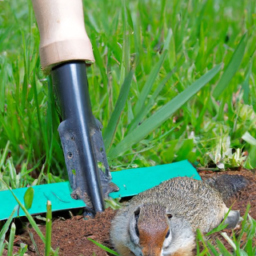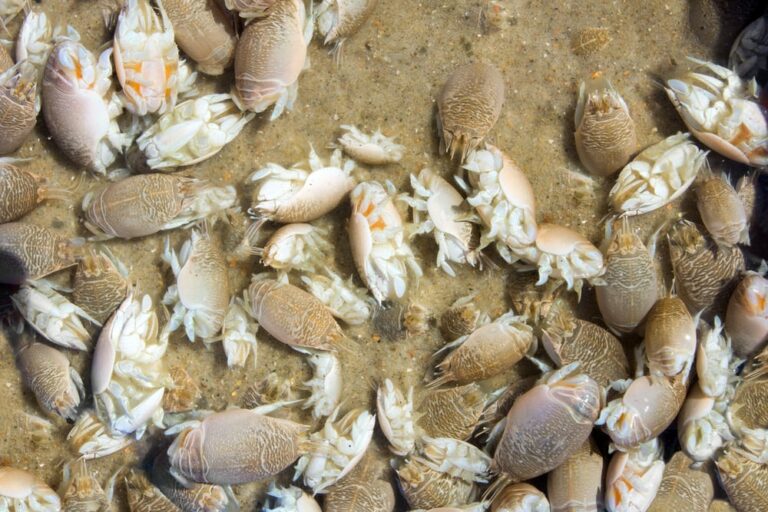Can Mice Climb Walls?
Can Mice Climb Walls?
Mice are incredibly agile and talented climbers, which makes them particularly adept at navigating their way around homes, both inside and outside. But are they able to climb walls, or are these skills limited to other surfaces?
Skills of a Mouse Climber
Mice possess several advantages for climbing. For one, their size enables them to fit into tight spaces that other animals may find difficult to access. On top of this, their claws are especially adapted for scaling vertical surfaces, allowing them to grip tightly onto the smallest of cracks and crevices.
Where Can Mice Climb?
Mice are able to climb most surfaces, including ceilings, walls, and furniture. They can also climb up rough, textured surfaces such as brick and concrete. Their climbing prowess even extends to smooth surfaces like glass, although they do need something to grip onto.
How High Can a Mouse Climb?
Mice can climb upwards of 12 feet, depending on the surface and the speed of the mouse. However, the average mouse is usually unable to climb higher than 6 feet.
What Can You Do To Stop Mice From Climbing?
Mice can be stopped from climbing through a few methods:
-
- Inspect and Seal: Mice are adept at squeezing into tight spaces, so inspect your home for any points of entry and seal them with sealant or caulking.
-
- Install Climb-Proof Materials: Install anti-climb materials to your walls, ceilings, and windows. Materials such as steel wool, wire mesh, and silicone caulk can help prevent mice from gaining traction.
-
- Set Traps: Set traps around your home to capture any mice that may try to climb. Remember to use appropriate bait and check the traps regularly to remove any dead rodents.
Conclusion
Mice are talented climbers, but they can be stopped if the right steps are taken. By using materials that are difficult to climb, such as steel wool, wire mesh, and silicone caulk, you can create a home that’s mouse-proofed and protected from the little climbers.
Mice are among one the most common pest problems for homeowners. Part of controlling the mice population is knowing their habits and capabilities. One question many people wonder is “Can mice climb walls?”
The answer is yes, mice can and do climb walls. In fact, mice are in some ways better climbers than cats and rats. They are able to define the texture and contour of a wall and use tiny claws to climb up smooth surfaces like walls. Even in the most vertical of walls, mice will find small holds and grip areas and ascend to the top.
It is also believed that mice are able to jump up surprisingly high, with some able to clear wall obstacles of 9 to 11 inches. This means that if part of the wall is lower than 9 inches tall, mice might be able to hurdle the obstacle and get up the wall.
But it’s not just walls that these creatures are able to climb. Mice are also able to scale furniture and curtains, as well as bookcases and closets. These agile rodents can even run upside down on pipe systems or electrical wires.
Fortunately, as agile and athletic as mice are, there are some points around the home that they may find hard to access. These areas mostly include parts of the home that are considered clean and have fewer food fragments. Mice can also have difficulty accessing pet food stored in the upper cabinets of the kitchen.
For anyone with a mouse problem, there are several steps that can be taken to prevent their entry and control the infestation. These include filling in any holes and cracks on the exterior walls and properly sealing off any interior access points. Removing food sources like pet food and crumbs and putting traps and repellent will also help keep mice away.
In conclusion, mice are capable of climbing walls, furniture, and other objects with ease. But by taking preventative measures and understanding the habits of these rodents, homeowners can have greater control over their rodent problems.
Also Read: Best Gopher Poison
Related: Best Gopher Killer
Related: Signs of Bed Bugs in Wood Furniture
Related: Black Bed Bug
Related: Does Lysol Kill Fleas
Related: Best Rat Poison
Related: Mite vs Bed Bug
Related: Do Rats Have Night Vision







